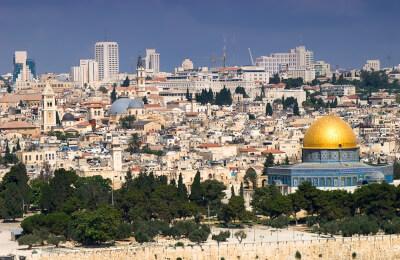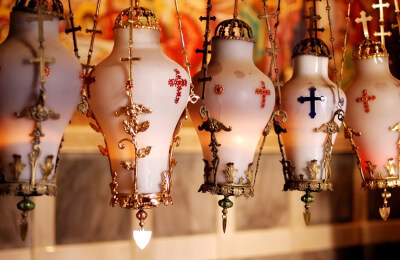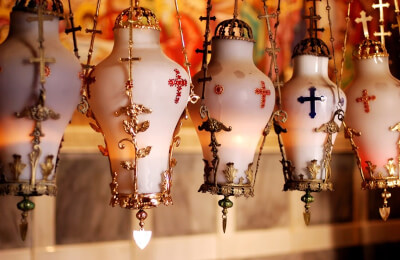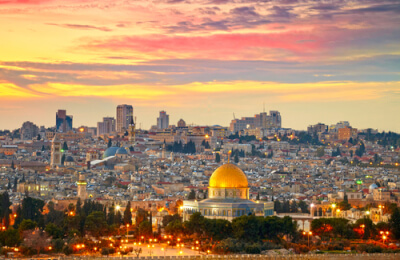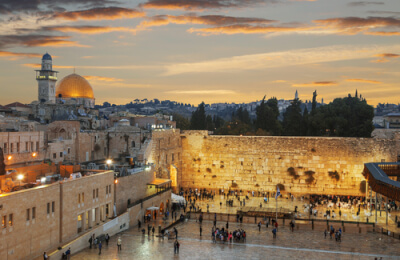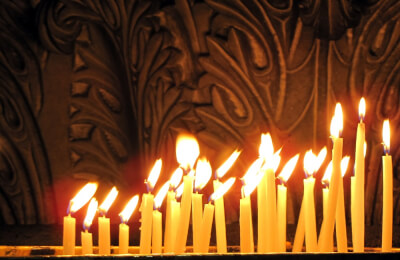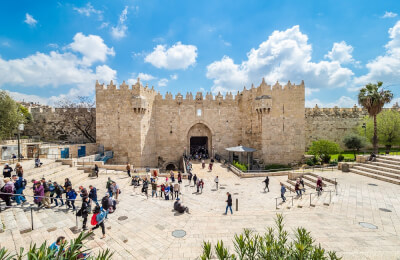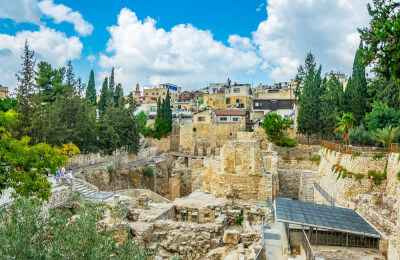1. Christian Jerusalem Promotion

2. Jerusalem of three religions Promotion
5. Bethlehem and Christian Jerusalem Promotion
Ascension Day on the Holy Land Promotion
136. Jerusalem - Via Dolorosa Promotion
160. From temple to temple Promotion
 175₪
175₪
 175₪
175₪
121. Bulgakov and Jerusalem Promotion
Mystical Jerusalem. Friday the 13th Promotion
Jerusalem tour Promotion
Jerusalem and Bethlehem Promotion
Jerusalem tour Promotion
We also found excursions from other cities that are close to your departure city
Other excursions that also deserve your attention
# Via Dolorosa: The Sacred Path of Suffering and Redemption
In the heart of Jerusalem's Old City, the Via Dolorosa, or the "Way of the Cross," winds its way through ancient stone streets, echoing with centuries of faith, devotion, and history. This sacred path retraces the final footsteps of Jesus Christ, marking his journey from the place of his condemnation to his crucifixion and burial. The Via Dolorosa is a pilgrimage route like no other, steeped in spirituality and laden with historical significance. In this exploration of the Via Dolorosa, we will walk in the footsteps of history, uncover the stories etched into its stones, and reveal fascinating facts that make it a revered site for Christians around the world.
## A Journey Through History
The Via Dolorosa, with its roots deep in Christian tradition, carries a profound historical legacy. Let us embark on a journey through time to understand its significance:
**1. Biblical Accounts:** The origins of the Via Dolorosa are rooted in the New Testament, particularly in the accounts of Jesus' crucifixion found in the Gospels. According to Christian tradition, this is the path Jesus walked while bearing the cross to Golgotha, the site of his crucifixion.
**2. The Condemnation:** The journey begins at the place where Jesus was condemned by Pontius Pilate, the Roman governor of Judea, in the Antonia Fortress. This site is now marked by the Convent of the Sisters of Zion.
**3. Stations of the Cross:** The Via Dolorosa is marked by fourteen Stations of the Cross, each corresponding to an event or location along Jesus' path. Pilgrims stop at each station to reflect and pray, commemorating Jesus' suffering and sacrifice.
**4. Ecumenical Pilgrimage:** The Via Dolorosa is significant for various Christian denominations, including Catholics, Orthodox Christians, and Protestants. It serves as a symbol of unity and shared faith.
**5. Easter Processions:** Every year, on Good Friday, the streets of Jerusalem's Old City come alive with processions reenacting the events of Jesus' final journey. Thousands of pilgrims and tourists gather to witness this poignant tradition.
## The Stations of the Cross
The Via Dolorosa is defined by its fourteen Stations of the Cross, each marked by a specific event in Jesus' journey to Golgotha. These stations are not only sites of deep religious significance but also rich in historical and architectural detail. Let's explore some of the most notable stations:
**1. The First Station - Jesus is Condemned to Death:** This station is located at the Convent of the Sisters of Zion, where it is believed Jesus was sentenced to crucifixion.
**2. The Third Station - Jesus Falls for the First Time:** Pilgrims gather at this station near the entrance to the Old City, symbolizing the first of Jesus' falls under the weight of the cross.
**3. The Fifth Station - Simon of Cyrene Helps Jesus Carry the Cross:** Tradition holds that Simon of Cyrene, a bystander, was compelled to help Jesus bear the cross at this station.
**4. The Seventh Station - Jesus Falls for the Second Time:** This station is situated within the bustling market area of the Old City, offering a striking contrast between the contemporary marketplace and the sacred path.
**5. The Ninth Station - Jesus Meets the Women of Jerusalem:** Here, pilgrims commemorate Jesus' encounter with a group of women who wept for him as he carried the cross.
## Intriguing Facts About the Via Dolorosa
1. **Varied Route:** The exact route of the Via Dolorosa has evolved over time, with different traditions and historical research offering various interpretations. Today, the route followed by pilgrims is a combination of tradition, archaeological findings, and religious consensus.
2. **Stone Pavement:** Parts of the Via Dolorosa's stone pavement are original and date back to the Roman period, providing a tangible link to the time of Jesus.
3. **Shared Custody:** The various Christian denominations that revere the Via Dolorosa share custodial responsibilities for its different stations, reflecting the complex religious tapestry of Jerusalem.
4. **Ecumenical Efforts:** The Stations of the Cross are marked with plaques in several languages, making the Via Dolorosa accessible to pilgrims and visitors from diverse cultural backgrounds.
5. **The Holy Sepulchre:** The journey along the Via Dolorosa culminates at the Church of the Holy Sepulchre, believed to be the site of Jesus' crucifixion, burial, and resurrection. The church is a significant pilgrimage destination for Christians worldwide.
## Planning Your Pilgrimage
For those planning a pilgrimage along the Via Dolorosa, careful preparation can enhance the experience and deepen your connection to its history and spirituality:
**1. Wear Appropriate Attire:** Dress modestly when visiting religious sites, covering shoulders and knees. Comfortable walking shoes are essential, as the route involves stone-paved streets.
**2. Guided Tours:** Consider joining a guided tour led by knowledgeable local guides who can provide historical and religious context to the journey.
**3. Respectful Behavior:** Maintain a respectful demeanor throughout your pilgrimage. Keep in mind that the Via Dolorosa passes through residential neighborhoods, so be considerate of local residents.
**4. Prayer and Contemplation:** Take time for personal reflection and prayer at each station. Many pilgrims find it meaningful to carry a small cross or medallion as a personal memento of their journey.
**5. Easter Experience:** If you plan to visit during Holy Week, be prepared for large crowds and vibrant processions, especially on Good Friday. Arrive early to secure a good vantage point.
## In Conclusion
The Via Dolorosa is more than a historical route; it is a spiritual pilgrimage that transcends time and place. Walking in the footsteps of Jesus along this sacred path allows pilgrims to connect with the profound suffering and redemption at the heart of the Christian faith.
It is a journey that unites Christians from diverse backgrounds and denominations in shared reverence and devotion. The Via Dolorosa serves as a tangible reminder of the enduring power of faith, the resonance of history, and the enduring allure of Jerusalem as a place where the spiritual and the temporal converge.
As you tread the cobbled streets of the Via Dolorosa, you become part of a living tradition that has spanned centuries—a tradition that invites you to reflect on the ultimate sacrifice and the boundless love that has inspired countless pilgrims to undertake this sacred journey.




